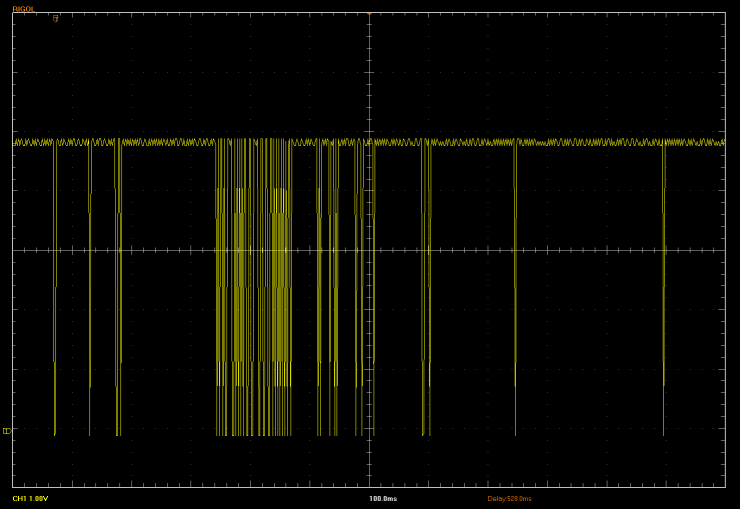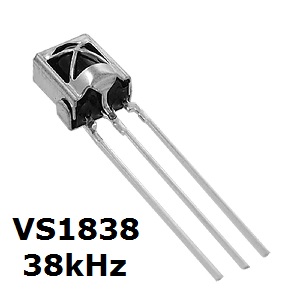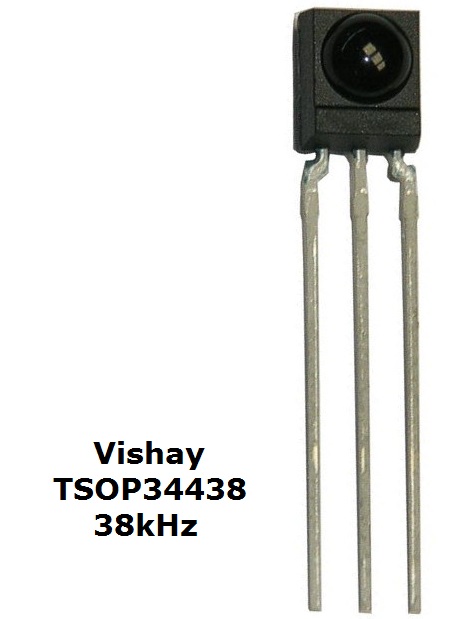Having helped many makers resolve problems with Infrared remote control projects over on the Arduino forum, we decided to put 2 of the more common 38kHz receivers, TSOP34438 vs VS1838B, ‘head-to-head’ over 3 rounds in a winner takes all contest. Different people report a wide variety of problems when first attempting infrared remote control, resulting from using the wrong receiver to timer or interrupt conflicts between the various libraries available. Our commentary on the ‘face-off’ will hopefully shed some light on the ability of these 2 common Infrared receivers to deliver results, as expected.

Before, we get into the competition proper, it is important to always check the data sheet of any component before purchasing. Links to data sheets are provided at the bottom of this post. If there is no data sheet linked by the vendor, it’s usually a good idea to avoid that component. The face off-takes place over 3 rounds in a winner takes all contest. The scoring is not scientific but is based on solid experience in this domain.
Round 1 – Purchase price

The TSOP34438 is manufactured by Vishay, who are a leading provider of Infrared receivers & emitters along with other high quality electronic components. The VS1838, on the face of it, seems to have similar specifications to the Vishay model. The data sheet is mainly in Chinese, but is possible to make comparisons for the key parameters. The Vishay data sheet is significantly more comprehensive, inspiring confidence. The Vishay TSOP34438 clocks in at $1.07 each in quantities of 1 to 100, plus shipping at Newark/Element 14. The VS1838B is available for as little as $1.42 including shipping on eBay (and Aliexpress) for 10 units, which works out at 14 cents each. When we saw that pricing we couldn’t resist placing an order to evaluate them against the Vishay devices. How can there be such a price differential on such common products!
The score after round 1 is a unanimous (0-3) verdict in favour of the VS1838B by the Judges with the overall score standing at 0-3.
Round 2 – The specs

Both devices boast similar specifications, although the Vishay data sheet is far more comprehensive and inspires confidence. They both operate at 38kHz and work at both 3.3V & 5V. Vishay just edges this round based on the Data sheet, particularly as the VS1838B data sheet that I found seemed to have the identity of the manufacturer removed. (If you do know the manufacturer please post a comment below.)
The score after round 2 is a majority (2-1) verdict in favour of Vishay’s TSOP34438 by the judges with the overall score now standing at 2-4 in favour of VS1838B.
Round 3 – The Performance
We are currently designing a range of IR PCB modules, to be launched in the coming months and for one of them we decided to evaluate the VS1838B with a view to replacing the existing Vishay model in the design, in the hope of driving costs lower. We tried a number of tests with standard IR protocols and also with longer Air Conditioner protocols which so often cause problems for IR receivers. The good news is that both units handled every signal we launched at them very well. Here comes the ‘but‘…… read on…
We are based in Dublin, Ireland which is not renowned for strong sunshine, but during one of our tests (indoor), on a moderately sunny day in Dublin, we noticed sporadic pulses being reported by the VS1838B. The Vishay always reported idle as expected under the same conditions. However, we still thought it could be some noise from the power supply and decided to wait for the sun to go down to test again. Voila, the VS1838B performed similar to the Vishay as long as the sun was turned off which, of course, is hard to do during daytime.
So round 3 ends with a ‘Technical Knock Out‘ and our self-appointed referee (that’s me) is forced to stop the contest!. The quality Vishay TSOP wins out every time.
The Implications
It’s really hard to envisage a situation where we would use these cheap VS1838B devices for Infrared remote control over the superior Vishay devices. Of course, if you are on an extremely tight budget and/or have plenty of spare processing resources then you could possibly filter out the ‘noise’ from the VS1838B, in software.
If you are stuck for an IR receiver then see our “Poor Maker’s IR Receiver” using just an IR LED. We have had many reports from around the world, of successful IR decoding using this method (with free code which is available for download).
To get a list of our suggested Infrared receivers (from Vishay) check out the details of our handy IR component kits which can be seen here.
Data sheets
TSOP34438 data sheet link
VS1838B data sheet link and VS1838B data sheet link
Disclaimer: AnalysIR is not connected in any way with (other than as a paying customer of) Vishay or the unknown manufacturer of the VS1838B. To date, we have always used Vishay Infrared components in our projects & products.